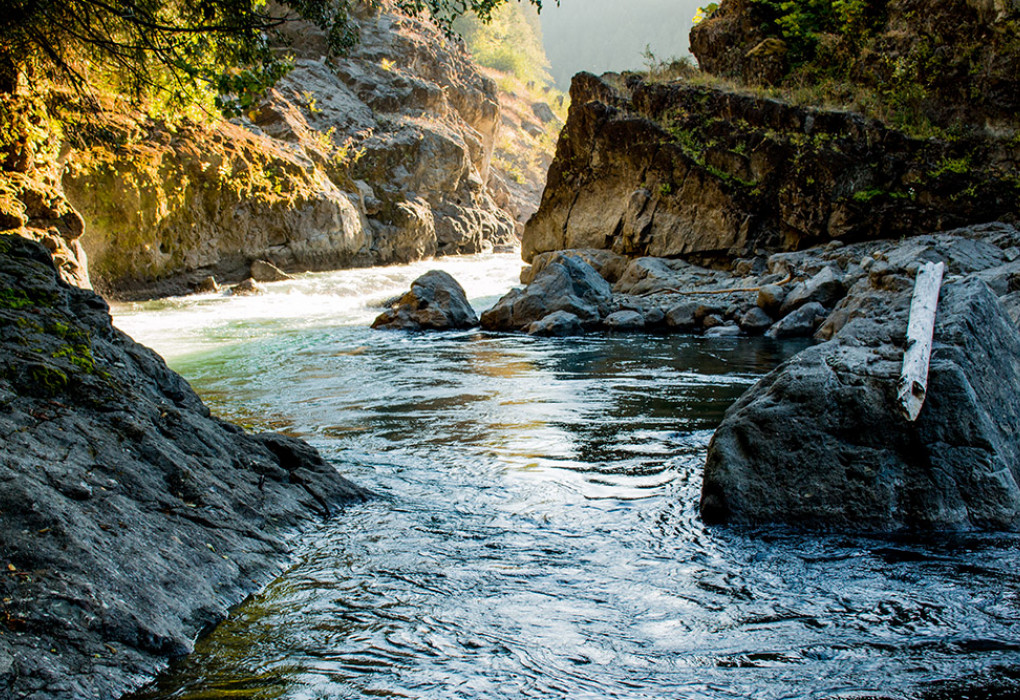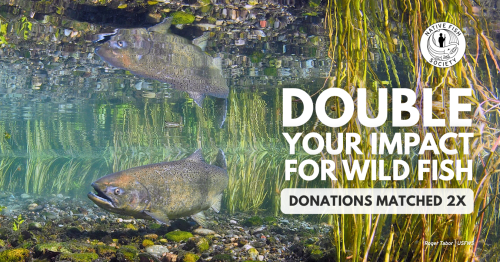Wild Yet?
Wild Yet?
Legit Wild Steelhead Gene Banks Long Overdue for Puget Sound
Native fish advocates around Puget Sound celebrated last August, when the Nisqually and Elwha rivers were set aside exclusively for wild steelhead. Part of Washington’s Statewide Steelhead Management Plan, they were the 6th and 7th wild steelhead gene banks, and the first two designated in Puget Sound by the Washington Department of Fish and Wildlife (WDFW).
As WDFW prepares to name a third, we shouldn’t get too comfortable. There was little opposition to the designation of the Nisqually, which has not received hatchery steelhead plants since 1982. After years of low returns, more than 2,000 wild winter steelhead spawned last spring, indicating the health of wild steelhead in this watershed is beginning to show signs of recovery.
In the free-flowing Elwha, the significance of the designation is complicated by the ongoing operation of the Lower Elwha-Kallam’s hatchery steelhead program. While the program isn’t intended to operate indefinitely, an end date has yet to be established. As it stands, the Elwha’s designation appears purely aspirational -- an aspiration we support, but we’re still waiting on true protections for the Elwha’s wild steelhead.
The best candidate for a gene bank in north Puget Sound is the Skagit River. The Skagit sustains what is both the largest and the healthiest run of wild steelhead in Puget Sound. Its designation may be the best opportunity to recover wild steelhead in western Washington.
But WDFW’s decision to delay the Skagit’s designation “pending further review” hints at what wild fish are up against. Unlike the Nisqually, the Marblemount Hatchery steelhead program has anglers divided over the Skagit. The bulk of opposition comes from anglers and local communities, like the Concrete City Council, which passed a resolution opposing the Skagit’s designation.
Generally, these communities want two things: fishing and fishery dollars. We believe they can have both, while still giving wild steelhead a legitimate shot at recovery in the Skagit. British Columbia’s catch-and-release wild steelhead fishery on the Bulkley River provides the local economy with millions of dollars annually and local First Nations with a subsistence fishery. A huge demand exists for catch and release wild steelhead fisheries -- all you have to do is spend a few days in Smithers, B.C. during September to see how many people are willing to travel and spend money to catch and release a wild fish. The same can be true for the Skagit.
Now is the time for a decisive move toward the recovery of self-sustaining populations in Puget Sound. The success of the Skagit as a wild steelhead gene bank hinges on coalition building within the very communities that oppose it. This may sound like an impossible task, but it’s the very the reason our River Steward Program exists: to empower and inspire local grassroots advocates to champion science-based solutions, like wild steelhead gene banks, for their Northwest homewaters and wild, native fish.

